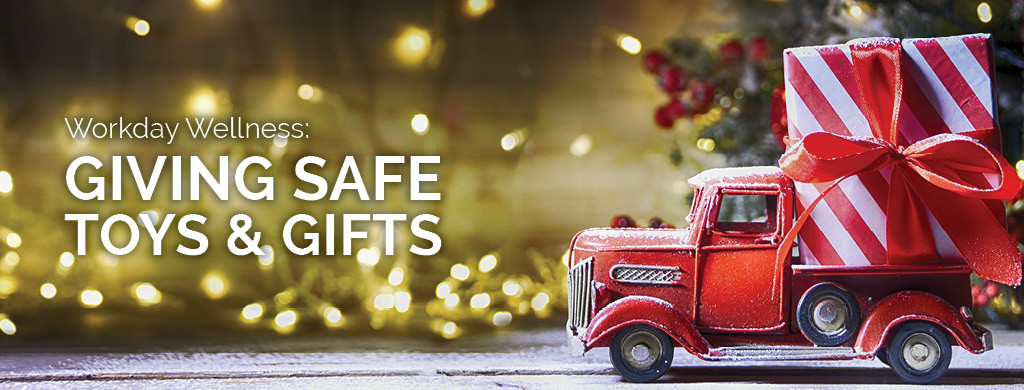

With the holidays just around the corner, gifts for children we love are top of mind. But many toys available today can be hazardous, especially if used incorrectly. About 200,000 kids end up in the emergency room with toy-related injuries each year.
Here are some guidelines to remember when choosing, giving, and playing with toys:
- Age-appropriateness – Toys intended for older children may pose a risk to younger, curious siblings. Consider your child’s age when purchasing a toy or game. Read all age guidelines on the package as well as instructions and warning labels. Separate toys by age when storing at home.
- Choking hazards – Look for small parts or other potential choking hazards before you settle on the perfect toy. Keep a special eye on small game pieces, things that resemble candy or food items, even soft, spongy toys that can be bitten into. Avoid marbles and balls with a diameter of 1.75 inches or less for children under age 3.
- Toss out broken toys – Check toys regularly for damage or broken parts. Sharp edges can cut, and small pieces are a choking hazard. If a toy is broken, make sure the child gives it to a parent to fix or throw away.
- Have a helmet – For riding toys like skateboards, skates, and scooters, make sure a helmet and safety gear are sized to fit and worn properly. Give appropriate safety gear at the same time with sporting equipment. Teach children how to use them.
- Safe storage – Put toys away when playtime is over to prevent trips and falls. Store toys in bins, baskets, on shelves or in a toy box. Make sure there are no holes or hinges that could catch little fingers. Outdoor toys should be stored in a safe, dry place to prevent rust, mold, and other damage.
- Choose non-toxics – When selecting art materials, including crayons and paint sets for young children, choose washable and non-toxic options. Look for those marked with the designation “ASTM D-4236.” This means the product has been reviewed by a toxicologist and is properly labeled for chronic health hazards.
- Avoid the worst offenders – BB guns, lawn darts, toys that shoot projectiles and other realistic-looking toy weapons are frequently listed among the most dangerous choices. Balloons, high-powered magnets, noise-making items, battery-operated toys and those that require electricity are also hazards for a variety of reasons.
- After gifting – Throw away packaging like plastic wrappers, small zip-ties, rubber bands and cardboard boxes promptly after opening as these can be choking hazards. If toys require assembly, have an adult put it together per the instructions. Demonstrate how to use the toy safely.
- Stay up to date on toy recalls – The organization Safe Kids compiles product recalls specific to children and sends twice-monthly e-mail alerts for recent recalls. Sign up for the latest recall information at http://safekids.salsalabs.org/recalls-newsletter/index.html.
Still, play time is an essential part of a child’s healthy growth and development, and toys can help support learning. Whenever possible, opt for toys that are creative, engaging, durable and environmentally friendly.
There are also a number of non-toy options for holiday gifts that children can appreciate. Art and craft supplies, books or audiobooks, board games and puzzles, tickets to a museum or special event, a camera, musical instrument, kitchen tools, camping gear, travel items, classes or subscriptions are all wonderful options to inspire a new hobby or provide special memories, all while ensuring a safe and happy holiday.
